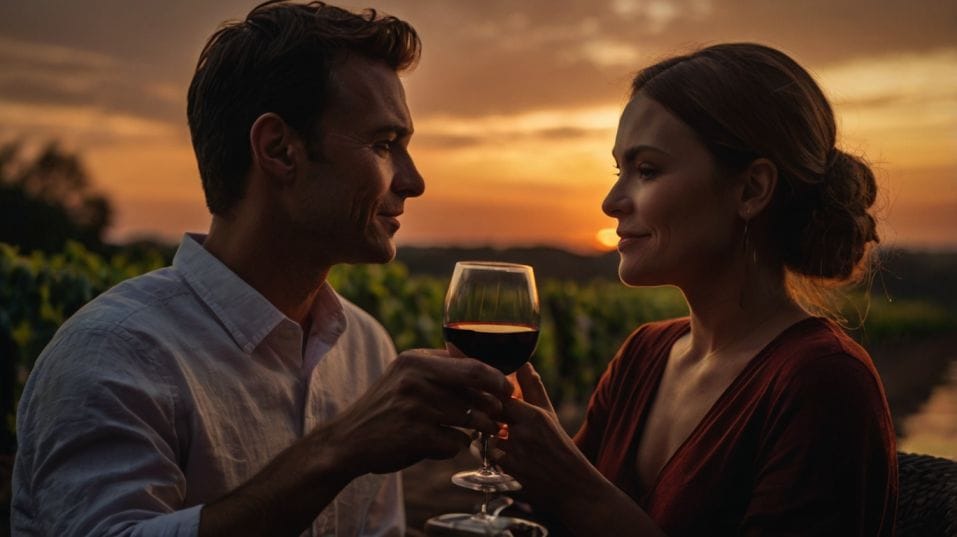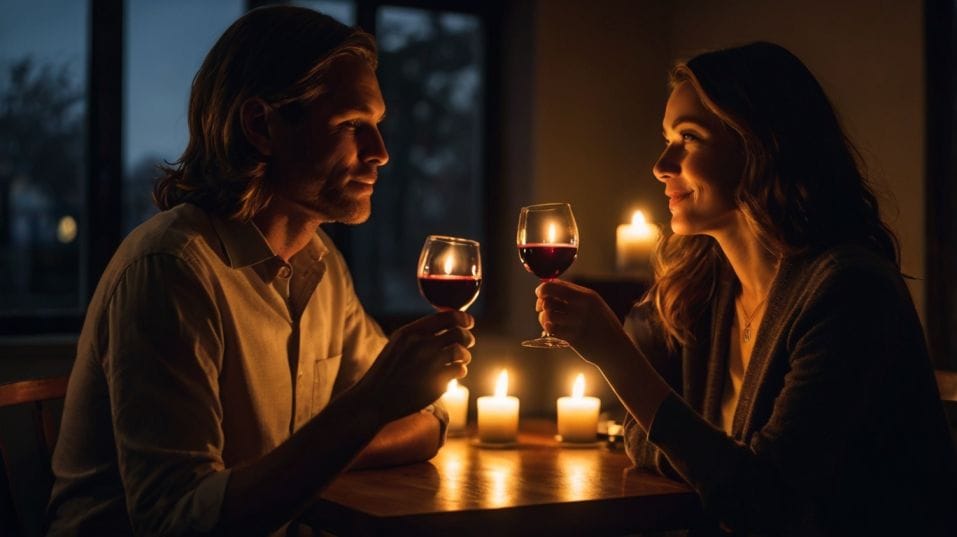The Ritual of the Toast: Where It Came From
Discover why the wine toast matters—from ancient rituals to modern mindfulness. Learn to taste with more focus, presence, and personal style.

Ever wonder why we toast before sipping wine? It’s not just custom—it’s a quiet moment that transforms drinking into something more intentional. That raised glass signals presence, curiosity, and care.
For anyone starting to explore wine, understanding the ritual behind the toast opens the door to tasting with more focus—and more joy. Before the swirl and sniff, this simple pause sets the stage. It’s where mindful drinking begins.
From Survival to Celebration: How the Toast Began
The toast has roots deeper than most people imagine. Long before it became a casual clink of glasses, it was a signal of trust, intention, and even survival.
Ancient Origins
In ancient Greece, hosts would drink first from a shared jug to prove the wine wasn’t poisoned.
The Romans turned it into a ritual offering, pouring a splash of wine on the ground to honor the gods before drinking. In medieval Europe, nobles would raise their cups at banquets to signal goodwill and unity.
In some cases, toasting involved touching glasses forcefully enough to spill liquids from one cup to another—symbolically mingling drinks to prove they were safe.
Shifting Toward Connection
Over time, this act moved from defense to connection. The danger faded, but the meaning stayed.
A toast became a way to mark the moment, recognize the people around you, and give weight to the wine in your glass. It’s not just polite—it’s deeply human.

Why the Toast Still Matters
Today, with wine more accessible than ever, you can pour a glass any time. No ritual required. But that freedom makes ritual even more valuable.
A toast creates structure. It draws a line between going through the motions and genuinely engaging with your wine.
This matters, especially when you're learning. Wine isn't like soda or spirits. You don’t chase intensity. You chase detail—texture, acidity, length, balance.
Those things don’t jump out right away. You need focus, and the toast helps you get there.
It doesn’t just punctuate the start of a meal or a gathering. It draws your senses in. It says, “Pay attention—something good is about to happen.” You taste better when you’re alert. The toast sets the stage for that.
Tasting Starts Before the Sip
Every serious wine drinker knows: the first taste is rarely the full picture. Before flavor even hits your tongue, you’re gathering information—visually, aromatically, emotionally. A toast gives your brain a beat to catch up.
Sensory Priming
You notice more in that moment than you realize. How the wine moves in the glass. How its color shifts in different light.
Whether it clings to the sides or glides cleanly down. These visual clues can reveal a lot—age, weight, even certain flavor profiles.
Tasting in Context
And if you’re with others, the toast helps frame the wine in context. A cool-climate Pinot tastes different at a crowded rooftop party than it does at a quiet dinner for two.
When you toast, you pause just long enough to feel where you are, who you’re with, and how that shapes what you’re about to taste. It’s not just a gesture—it’s a tuning fork for your palate.
The Role of Confidence
Toasting also gives you a chance to show intention—without needing to say much. You don’t have to be an expert to lead with confidence. You just need to care.
Holding your glass by the stem. Raising it with a calm, unhurried motion. Making eye contact. These are small signals, but they carry weight.
In early wine experiences—restaurant tastings, classes, or dinners with more knowledgeable friends—it’s easy to feel unsure. The toast helps ground you.
It says: “I’m here for this. I want to understand.” That mindset matters far more than having all the right words. Even in quiet settings, like pouring a glass at home, the toast can become a moment of intention.
A solo toast isn’t self-indulgent—it’s part of building your own tasting ritual. When you treat wine with a little ceremony, you open yourself to learning more from every bottle.
Culture, Style, and the Global Toast
It’s worth noting: not all toasts look the same. In France, toasting is often quiet and brief—“Santé,” with just a glance and a smile. In Germany, tradition says you must look each person in the eye, or risk “seven years of bad luck.”
In Japan, sake is raised at chest level with a clear “Kanpai,” usually without clinking. And in many cultures, clinking is only for certain occasions—too casual for formal settings.
Cultural Awareness
When you understand the cultural nuances, you show respect for the wine and the people around you. That awareness enhances the experience. It doesn’t mean performing—it means being present, curious, and thoughtful.
Place and Meaning
As you taste more wines from around the world, this mindset becomes even more important. Great wine always reflects place. Toasting helps connect that place to your moment.
Developing Your Own Tasting Ritual
No one needs a script to enjoy wine well. But rhythm helps. A small personal ritual—lighting a candle, playing a record, pouring into the same favorite glass—can train your senses. The toast anchors that rhythm.
Consistency Builds Confidence
Maybe you toast every first glass, or every new bottle. Maybe you keep it simple, or turn it into a quiet reflection. What matters is consistency.
You’re training your brain to pause, to notice, to shift into tasting mode. Over time, you’ll find it easier to pick up nuance, to compare vintages, to recognize what moves you and what doesn’t.
Attention as a Skill
Wine tasting isn’t just about building knowledge—it’s about sharpening awareness. The toast gets you there faster.
Final Thoughts
The toast is more than a social gesture. It’s a bridge—from casual sipping to thoughtful tasting. From distraction to presence. When you raise your glass with purpose, you give meaning to the wine, the moment, and the company.
You don’t need to be fluent in wine vocabulary or memorize varietals. You just need to slow down. Focus. Pay attention. That’s how real wine knowledge grows—from the glass up.
So tonight, add one small thing to your wine ritual: a toast with intention. Raise your glass with care. Meet someone’s eyes. Breathe in, then sip. Whether you’re learning, exploring, or simply enjoying, that pause is the moment it all begins.




